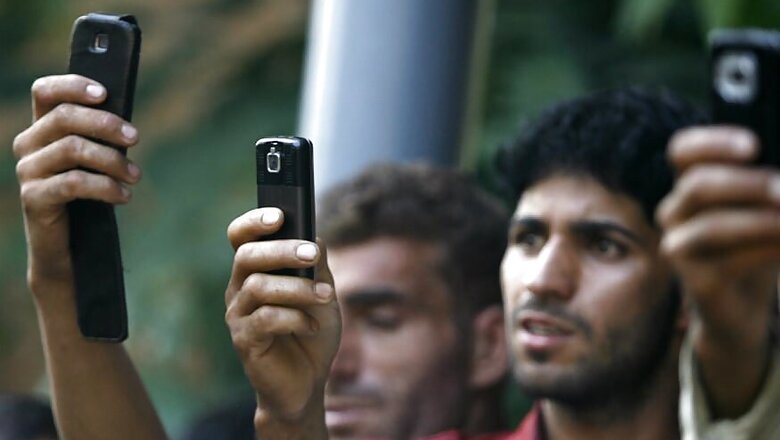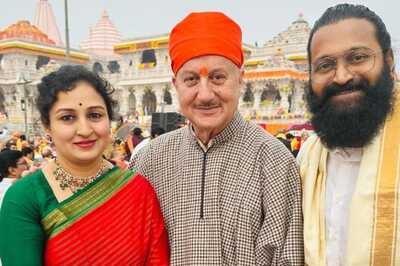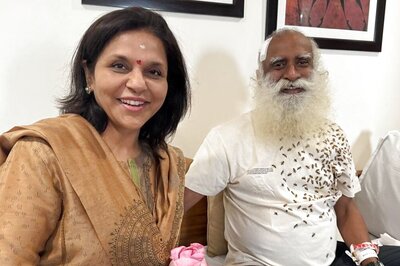
views
One of the indisputable learnings from the Covid-19 crisis is that digital connectivity is essential to ensure the well-being of citizens. While India has an overall teledensity rate of 90.5%, this is skewed towards urban areas with multiple connections being owned by urban households. Rural teledensity is still less than 60% and the internet penetration rate is less than 30%.
In India, 3G or 4G-enabled smartphones are the primary mode of internet access and one could safely presume that a significant proportion of the rural population owns feature phones that do not support mobile-banking apps/e-wallets and are incompatible with e-health, e-education and e-commerce.
There are other inequalities in access. It is estimated that even in cities, less than 25% of women own mobile phones and it can safely be assumed that the aged and persons with disabilities would have very little digital accessibility and this problem would be worse in rural areas.
The Indian Telegraph (Amendment) Act, 2003, created a Universal Service Obligation Fund (USOF) and mandated that it be used to provide affordable access to telegraph (telecom) services to people in rural and remote areas. Universal Service is an international concept and it is understood that access/service must be defined dynamically in terms of prevailing technology.
Although the National Digital Communications Policy 2018 targets broadband for all, it is obvious we have a long way to go. The present USOF approach of having large, unwieldy, centralised schemes with restrictive technology specifications may not be ideal to achieve universal digital inclusion. Decentralisation and technological neutrality, while ensuring competition and the ensuing innovation and economy, may be a better way forward.
In times of crises and disasters such as the one we are experiencing now, the easiest way of providing a safety net to the poor is to give them the same convenient digital access that the well-off benefit from in cities.
Let’s take the example of the 400-million-odd labour force in the informal economy. It needs to be ensured that they can easily obtain government benefits through their mobile phones regardless of where they are. Thus, a labourer from rural Bihar who is working in Delhi, should be able to receive Direct Benefit Transfer (DBT) money digitally and be able to buy his basic necessities in the same way we take it for granted, i.e., through UPI-enabled apps and digital payment.
As with all telecom facilities, positive externalities would extend far beyond the immediate and obvious advantages of last-mile connectivity for the individual connected. Let us consider the current lockdown. Official information dissemination would be facilitated. Desperate measures such as walking home to villages that are miles away could be avoided as help would literally be available at hand. Coverage of protective apps like Aarogya Setu would become universal and therefore more effective. Further, even when MNREGA is not operational on construction sites, the smartphone could enable labour to be given useful tasks in their own vicinity.
All this requires at least one smartphone per beneficiary household. This is the missing piece that would complete and cut across the composite of DBT schemes that already cover many other basic needs. There is no doubt that today, owning an internet-enabled smartphone is a basic need.
A 2017 GSMA study had estimated that more than 134 million people in India cannot afford even the cheapest available internet-enabled handsets, as they cost more than the affordability threshold of 5% of income. The question is how to make a smartphone available to households that can’t afford them.
Universal Digital Safety Net-National Digital Jan Sampark Scheme
This can be achieved through a National Digital Jan Sampark Scheme (NDJSS) that would be seamlessly linked to the DBT mission database. In order to arrive at eligibility for smartphone subsidy from government, one can look at the 125 million MNREGA beneficiaries. Some of them would belong to the same household and some may already own smartphones and once this is verified, can be excluded. To this truncated list can be added the beneficiaries of widow pension and disability pension schemes.
Assuming the cost of a basic smartphone with camera and bundled with a postpaid data connection phone is at most Rs 5000, and there are about 100 to 120 million beneficiaries volunteering for the scheme, the cost of the scheme would be in the range of 50,000 to 60,000 crore. While this may seem prohibitive, it can and should be partly self-funded.
The scheme could be open to all telecom service providers with the government, laying down only basic specifications, deliverables and service quality parameters. To participate, TSPs would need to have the required level of connectivity in the rural areas and to file their NDJSS tariff plans with the Telecom Regulatory Authority of India. This would create a ready market and hopefully encourage competitive service provision to ensure economy and quality. Thus, say a rural household buys a connection under this scheme, it would come bundled with a smartphone and would be valid for three years with a minimum monthly data usage and free incoming calls.
Fifty per cent of the cost should ideally be mandatorily deductible from among the existing cash-based DBT entitlements of the beneficiary, to be paid in 36 instalments of about Rs 70 each. The beneficiary would be aware of this deduction from her entitlements and would be free to shop for the cheapest and best NDJSS approved tariff plan. Service providers would compete for these subscribers that would drive down the cost. Fifty percent of the cost would be borne by USOF.
The service provider would thus receive 50% of plan cost upfront under the scheme based on records of beneficiaries enrolled through a robust online authentication linked to the DBT/Aadhar database. The remaining 50% would be paid in instalments over 3 years to the TSP from the DBT after a deduction at source from beneficiary entitlements. The participating TSPs would be required to ensure that their retail network can take care of repairs, etc., and device insurance would be built into the scheme. This would all be part of their contract with the USOF administration.
The scheme would also have the benefit of providing a new market for TSPs and creating a demand-side incentive to roll out services in rural areas making, internet connectivity more widely available and affordable.
Digitally Protected Across India
The other complementary requirement of a safety net is that most, if not all, entitlements be nationally accessible and not linked to a district/state. Thus, in a situation like the lockdown, a beneficiary could seamlessly access her entitlements regardless of temporary/present location. This requires mandatory linking of Aadhaar cards and ration cards with an interoperable Public Distribution System (PDS) for all states and monthly reconciliation for settling interstate claims.
Further, a pan India ‘know the needy’ framework may be developed for targeted beneficiary identification and benefits disbursal and accounting. Since the PDS system is already integrated with the Aadhaar database to ensure identification of legitimate beneficiaries, interoperability may be achieved by simply bringing the state-level PDS systems on to a common platform.
The benefits of the above schemes would be further strengthened when all development institutions in rural India are digitally enabled and routinely communicate with rural population and beneficiaries digitally. A Public Private Partnership model may be explored for the same. Instead of trying to achieve this through massive centrally sponsored roll outs, states/districts may be encouraged to obtain this connectivity directly from service providers on a competitive basis.
These measures would place the poor on a more equal footing as citizens. They would provide a digitally enabled safety net and means of empowerment through a two-way service delivery: information and feedback channel. Universal digital financial inclusion will become a reality.




















Comments
0 comment